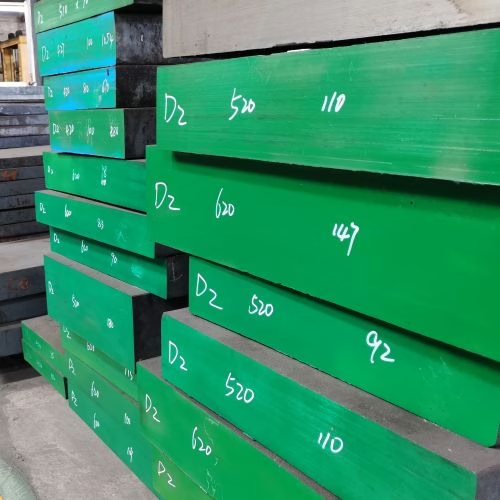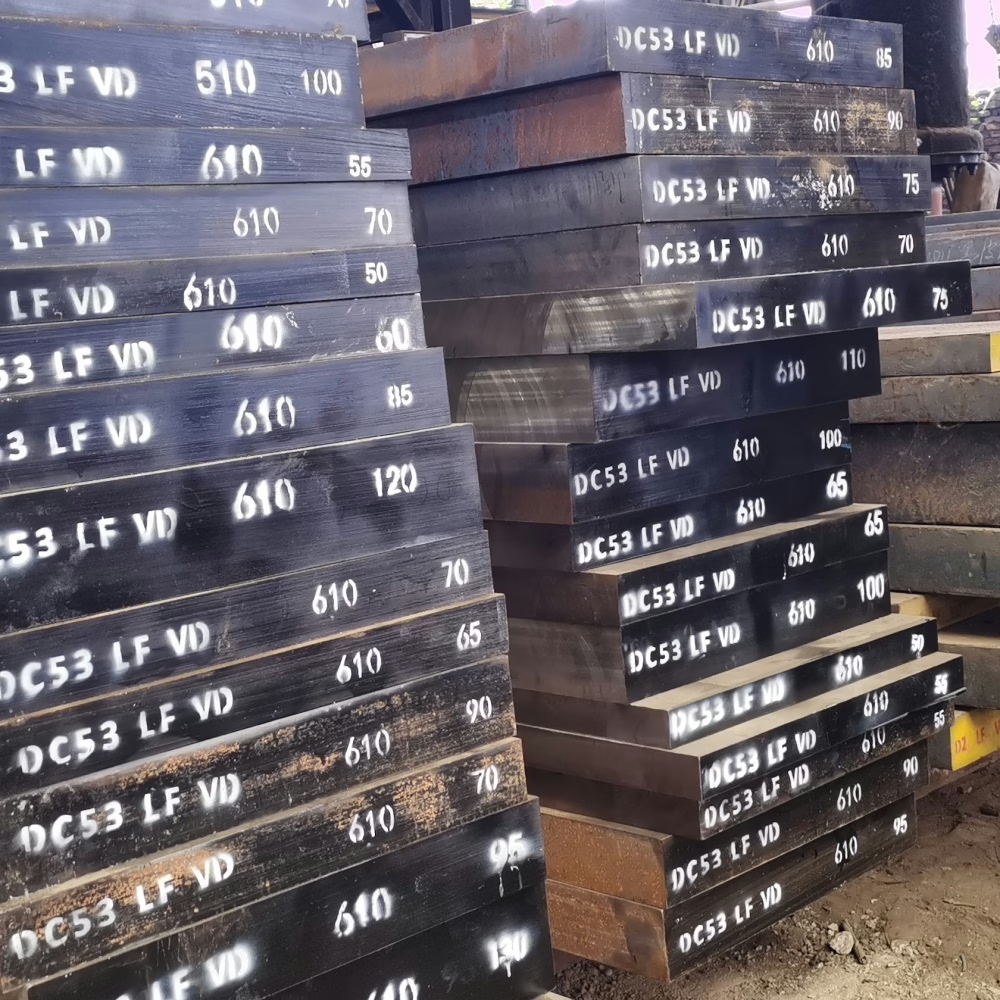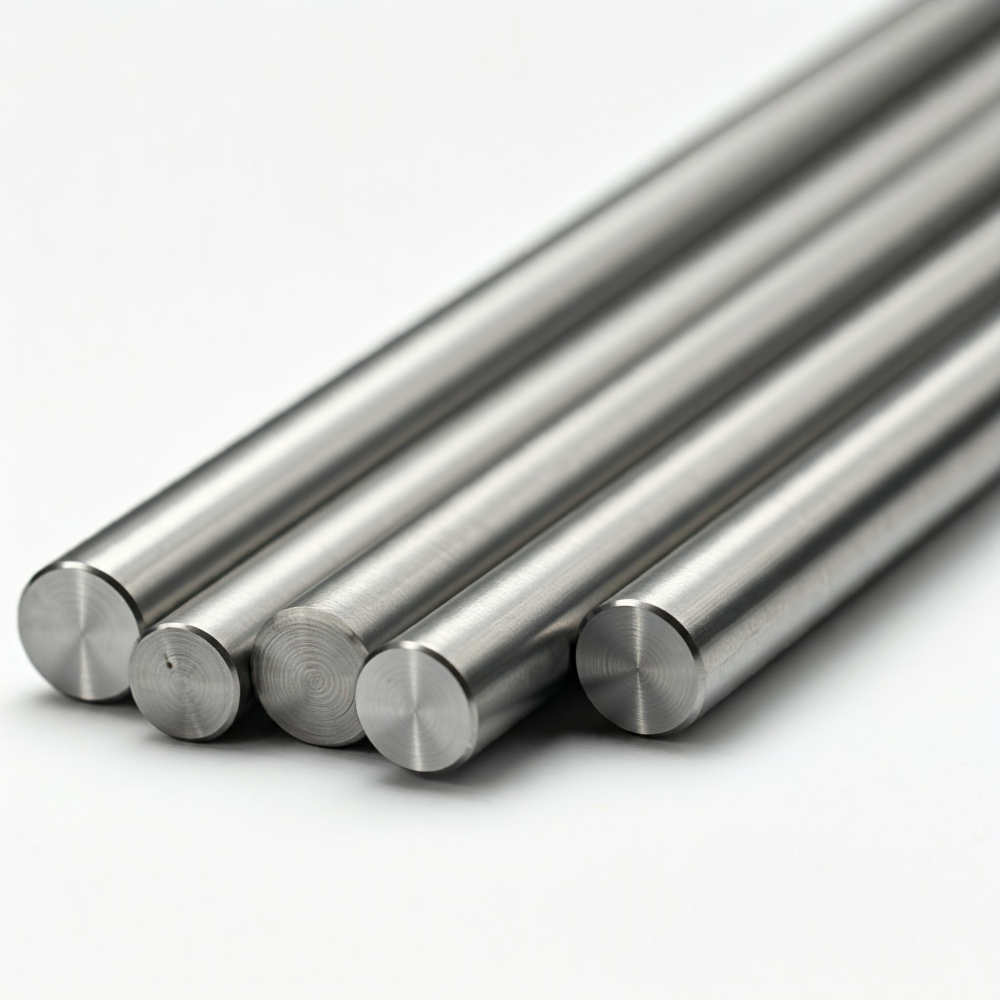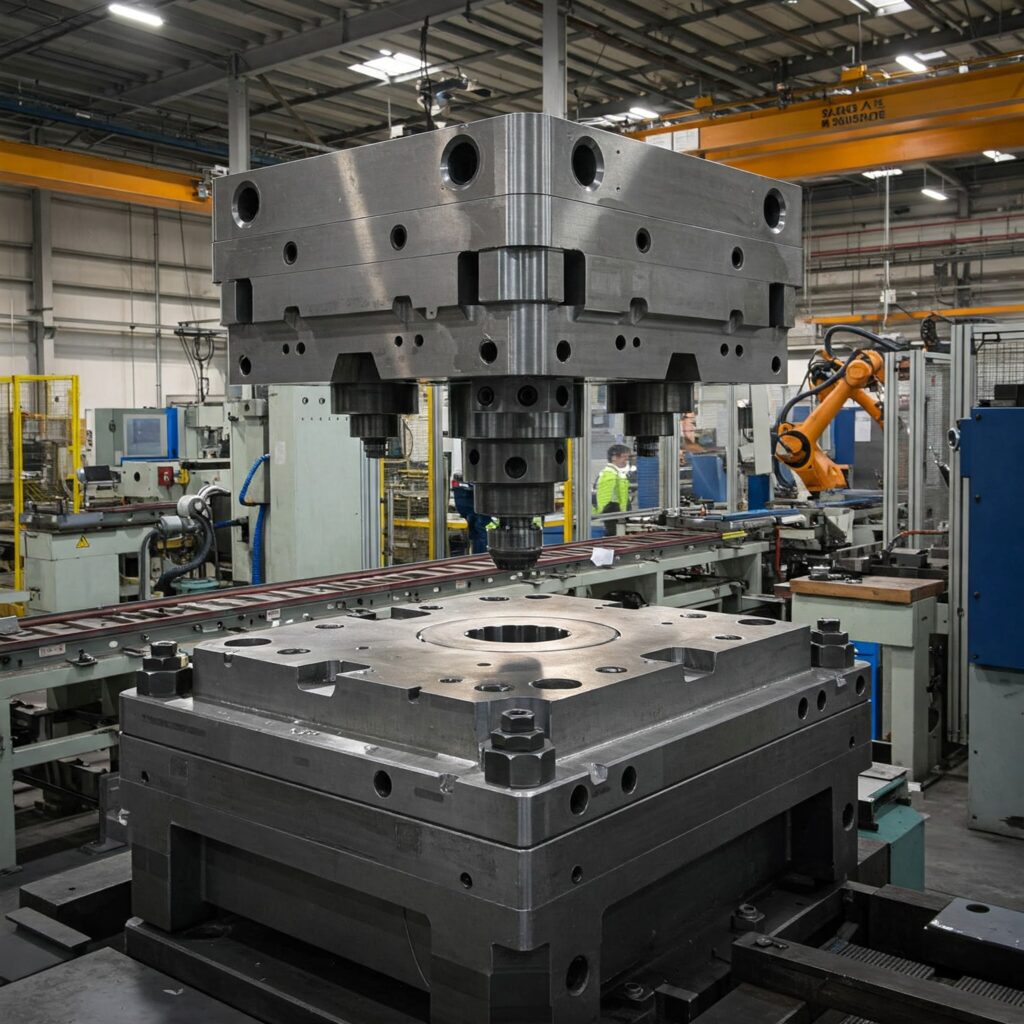Daito Special Steel Co., Ltd., originally developed DC53 tool steel in Japan as an improved version of DC1 steel. DC53 is also a high-quality substitute for D2 tool steel. We will compare DC53 and D2 in terms of their use.
D2 Tool Steel: The Industry Standard
D2 tool steel is a high-carbon, high-chromium, air-hardening cold-work tool steel that serves as a benchmark for measuring the performance of other tool steels. As a very traditional steel grade, humans have been using D2 tool steel for decades, and it offers a very high cost-performance ratio.
Key Characteristics of D2
- Hardness: The maximum D2 steel hardness after annealing is 255 HB. After appropriate quenching and tempering treatment, its normal working hardness is typically 58-60 HRC, and can even reach 60-62 HRC. The hardness after quenching is generally 61-64 HRC.
- Wear resistance and abrasion resistance: D2 has excellent wear resistance and abrasion resistance after quenching, which is one of the most important characteristics of D2 steel.
- Toughness: D2 steel’s toughness is below average, but it is still considered for use in specific applications where toughness is a consideration.
- Machinability and grindability: D2 is very difficult to machine because of its high hardness. Interestingly, in some applications, D2’s high hardness is an advantage, so it is a double-edged sword. If the machinability and grindability scores of steel with 1% carbon content are set at 100 points, then the machinability and grindability scores of D2 steel are 45 points.
- Heat treatment: D2 is an air-hardening steel characterized by excellent dimensional stability during quenching, with an expansion or contraction rate of approximately 0.0005 inches per inch. Its austenitizing temperature typically ranges from 1010 to 1095 °C (1850 to 2000 °F). The tempering temperature range is 205 to 540 °C, with the typical tempering temperature for D2 being 200 °C. Find more information about how to Properly Heat Treat D2 Steel.
- Fracture Behavior: This data is not commonly used. In our review of experimental tests on D2 material, no necking was observed prior to fracture, the fracture mode was smooth surface fracture, and the fracture area reduction rate was only 1.3%.1


DC53 Steel: An Enhanced Cold-Work Tool Steel
As mentioned at the beginning of this article, DC53 is a type of steel commonly used as a substitute for D2. It is also a high-toughness cold-work tool steel.
Key Characteristics of DC53:
- Hardness: One of the significant advantages of DC53 steel is that it can achieve a hardness of 62-63 HRC after quenching and high-temperature tempering at 520-530°C, which is even higher than SKD11 steel. The commonly used hardness of DC53 steel is ≥58 HRC, with a corresponding tempering temperature of 550-680°C.
- Toughness: DC53 has high toughness and, compared to D2, DC53 has greater resistance to chipping and fracture in applications involving impact or intermittent loads.
- Wear resistance: DC53 exhibits better wear resistance, particularly in conditions where abrasive wear is prevalent.
- Machinability: Compared to D2 steel, DC53 has the advantage of excellent machinability, suitable for wire cutting. This gives DC53 an advantage in terms of manufacturing cost and time when machining complex mold geometries that require electrical discharge machining (EDM) or wire cutting EDM.
- Heat Treatment: DC53 involves quenching and high-temperature tempering. The quenching temperature is typically 1000-1050 °C, followed by air or oil cooling. The high-temperature tempering at 520-530 °C is key to achieving its optimal balance of hardness and toughness.
- Applications: DC53 is utilized for precision stamping dies, deep drawing dies, thread rolling dies, and cold blanking dies. It is also suitable for hot pressing dies.
Direct Comparison: D2 vs. DC53
When we put D2 and DC53 side-by-side, some critical distinctions emerge:
- Hardness and Performance: Both steels can achieve very high hardness. D2 steel typically operates in the 58-60 HRC range, while DC53 steel can reach 62-63 HRC after high-temperature tempering. In high-wear applications, DC53 has a clear advantage. After undergoing certain coating processes, the hardness of DC53 can be further enhanced, making its advantages even more pronounced.
- Toughness: DC53 has higher toughness than D2. DC53 is designed to withstand impact loads better and is less prone to notching or brittle fracture. These conditions may not be suitable for D2 steel.
- Machinability: As mentioned above, DC53 has excellent machinability for wire cutting compared to D2. D2 steel is difficult to machine and grind. For complex mold geometries that require intricate cutting, DC53 can significantly reduce manufacturing time and tooling costs.
- Wear Resistance: Both types of steel have excellent abrasion resistance.
- Hot Workability: D2 is primarily a cold-working tool steel, but it can also be used for hot finishing of forgings. DC53 can be used in certain high-temperature applications, such as hot pressing dies.
- Application: Both are general-purpose cold work steels. Compared to D2, DC53 has better toughness and wire cutting performance, so it is more commonly used in precision stamping dies and tools with complex geometries that require high crack resistance. D2 remains a reliable choice for long-term, high-volume blanking and forming processes, especially in applications requiring wear resistance and dimensional stability.
In summary, if high hardness and high wear resistance are required, while also maintaining toughness (especially the ability to resist minor chipping or cracking), or if the manufacturing process heavily relies on wire cutting EDM (electrical discharge machining) in precision mold making, then DC53 is undoubtedly the ideal choice. If only high wear resistance and high dimensional stability are required, D2 can be selected, as its market price is lower than that of DC53.
- Algarni, M. (2020). Mechanical properties and microstructure characterization of AISI “D2” and “O1” cold work tool steels. In A. Di Schino & K. Sugimoto (Eds.), Mechanical properties and microstructure of forged steel (p. 151). ↩︎
Choosing Between DC53 and D2 Steel?
The right choice is critical for your project’s performance and cost-efficiency. With over 20 years of tool steel expertise, our specialists can help you select the ideal material for your needs, ensuring maximum durability and value.
▼ Just fill out the quick form below to get started.


